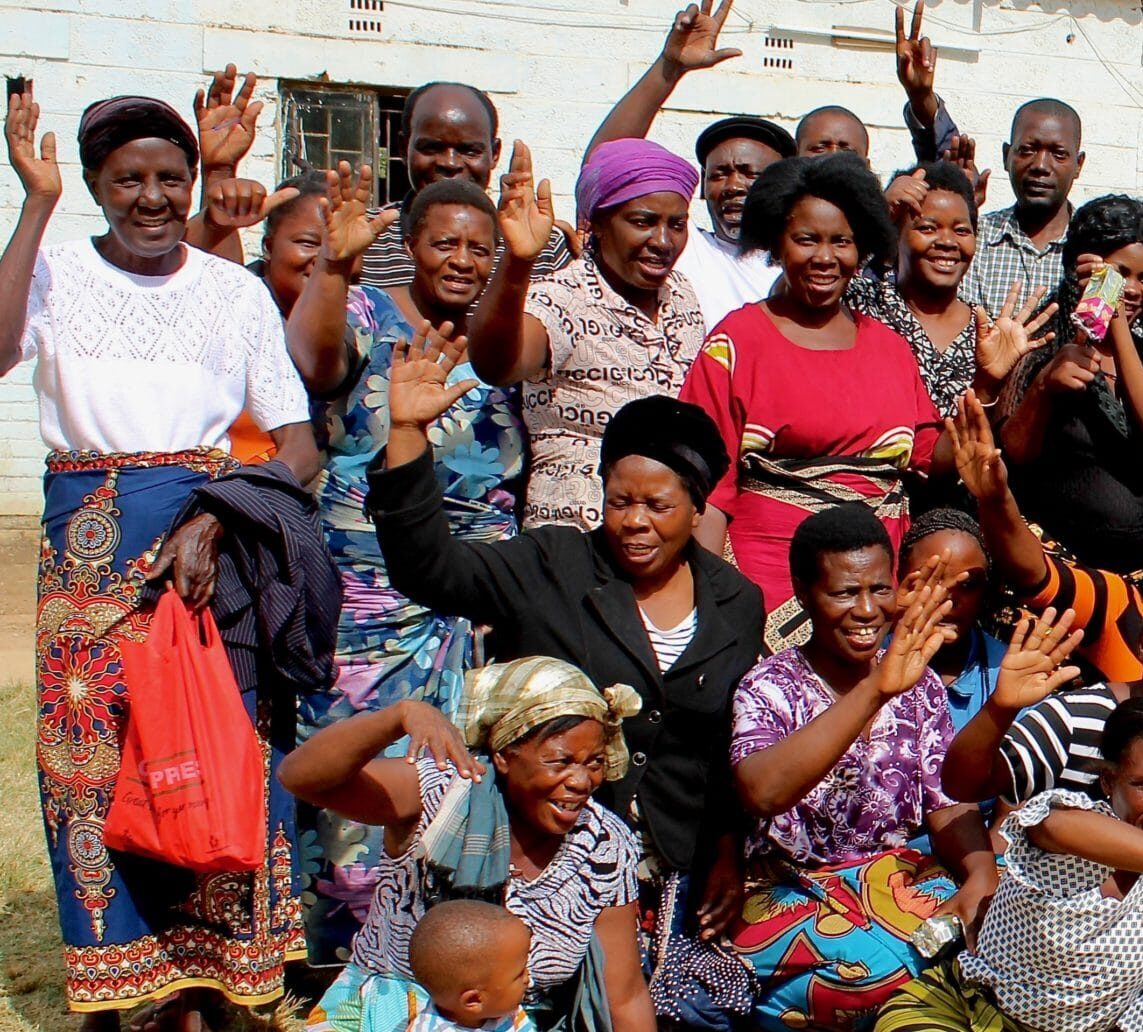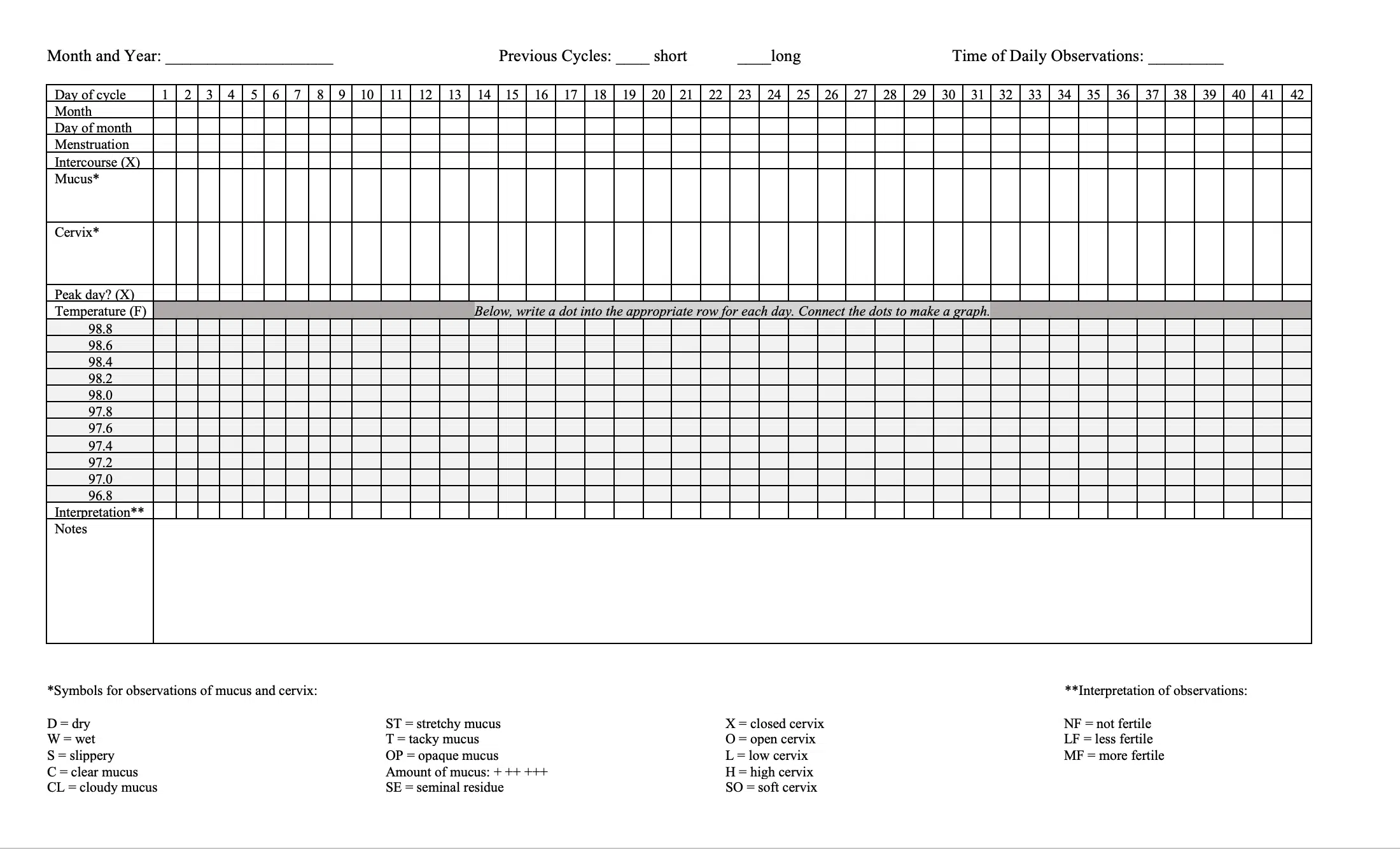In the US, we value our freedom. The developers of the birth control pill capitalized on this desire. They claim the pill gives women freedom to control their bodies and their reproduction.
When you tell a lie often enough, people begin to believe it. In this case, they literally swallow it.
But freedom doesn’t come from a small pill. As we will see, freedom comes from knowing and understanding your body. Freedom comes from working with nature, not from thwarting it. The developers of the Creighton Model FertilityCare™ System understood this.
Why Go Natural for Family Planning?
Why would researchers want to create a natural way to manage fertility? There are many reasons. People have known for years that the pill is harmful to the body and that it can kill a preborn baby. They have just chosen to ignore these facts for the sake of their perceived freedom.
Even secular psychologist Sarah Hill, PhD, understands the harmful effects of the pill. She wrote a book about the way the pill changes a woman—physically, emotionally, and psychologically. In it, she states:
Changing women’s hormones changes women. . . . Research suggests that [the pill] probably has a hand in women’s mate preferences, our sensitivity to smells, our relationship satisfaction, the functioning of our stress response, the activities of multiple neurotransmitter systems, the activities of multiple hormones, our moods, our persistence in difficult tasks, our ability to learn and remember, and our sex drive. And this is probably just the tip of the iceberg. Our sex hormones influence billions of cells throughout our bodies—including a huge number of them in our brain—meaning that the effects of the pill on who women are, are likely to echo throughout their bodies from head to toe.
The truth is scary! Hill’s book does not even address the fact that the pill is an abortifacient or that it can cause many different kinds of cancer. Nor does it address the immorality of the pill. But it makes the sound argument that being beholden to a pill and all its negative side effects is not a “freedom” that any woman should strive for.
Right now, women should be thinking: There must be a better way!
And there is. It’s called the Creighton Model FertilityCare™ System (CrMS).
About the Creighton Model FertilityCare™ System
CrMS is a safe and moral method of family planning. A couple can use this method to either achieve or avoid pregnancy. And women of all ages and in all stages of life can use this method. So whether your cycles are regular or irregular, if you are breastfeeding, or if you are closing in on menopause, CrMS is a safe and beneficial method to use.
The same cannot be said of hormonal birth control, which treats fertility as a disease, something that should be stifled.
CrMS is the complete opposite. It teaches that fertility is a normal part of a woman’s life. It helps a woman work with her body to achieve whichever fertility goal she has.
When a couple decides to use CrMS for family planning, they must first learn how it works from a trained professional. This person teaches the woman to observe her body and record specific “biomarkers,” signs that indicate whether she’s fertile or not.
In addition, these biomarkers also help a woman understand any health problems she may be experiencing. If the woman does have problems, a doctor trained in CrMS can use her observations and charting information to help solve the problem. He does this through what is called NaProTECHNOLOGY. This natural procreative technology works with a woman’s body to find reproductive health problems, such as infertility, premenstrual syndrome, excessive bleeding, and polycystic ovarian disease.
Origin of the Creighton Model
The Creighton Model FertilityCare™ System came about as a modification of the Billings Ovulation Method, another natural fertility tracking system.
The difference between the two is slight; it has to do with how the information is tracked. According to the Diocese of LaCrosse:
The Billings Method™ . . . can be learned very quickly and is used by couples around the world. Couples using the Billings Method™ rely primarily on a sensation or wetness or dryness at the vaginal opening. The [Creighton] FertilityCare™ method is a standardized model of the Billings Method™ that is typically taught in a medical setting. It provides couples with a defined grading system for cervical fluids. Because of its standardization, charts tracked in this method can be used to detect underlying menstrual cycle irregularities.
CrMS involves a standardized tracking and charting system. Medical personnel teach the same concepts to all couples, which makes it easier for them to interpret a woman’s charting.
To successfully use this method, a woman must learn to understand her body. That is where the trained educator comes in. The educator meets with the couple regularly and teaches both the man and woman how to observe and record the feel and texture of the woman’s cervical fluid.
According to Brian Clowes, PhD:
The cervical fluid/ovulation method is based upon the regular pattern of changes in the cervical fluid during the menstrual cycle. The quantity and quality of this fluid in terms of slipperiness, stretchiness, wetness and tackiness will change from day to day as a woman approaches ovulation. Ovulation usually occurs within one day before or after the last day of the most slippery or fertile fluid, i.e., the “Peak Day.” Generally, users of the ovulation method start noting the fertile period starting with the appearance of any external fluid after menstruation has ceased. They regard the time of post-ovulation infertility as starting on the fourth day after the Peak Day.
This tracking system helps women understand exactly where they are in their fertility cycle.
Advantages of the Creighton Model
CrMS has numerous advantages:
- First and foremost, CrMS is safe. Unlike the pill or any other type of hormonal contraceptives, there are no side effects.
- CrMS is also natural.
- Because CrMS works with a woman’s body rather than against it, it is not immoral.
- There is very little cost to CrMS. The couple must pay for the training. But after that, the woman can simply note her bodily changes on a chart. There is even an app for this purpose.
- CrMS fosters good communication skills between the husband and wife. The couple must learn to work together, and because of this mutual cooperation, couples who use this method often say that they feel closer.
- CrMS helps couples come to a greater understanding of the sanctity of life.
As the CrMS site states:
The challenge to live in harmony with one’s fertility is often one of the most exciting and meaningful aspects in the use of this system. Most couples find that the love and respect each holds for the other grows as their understanding and appreciation of their fertility increases. It is a system that is firmly based in a respect for human life, human dignity and the integrity of marriage. Indeed, it is the couples who use this system and their families that benefit from this experience.
Efficacy of the Creighton Model
A FACTS about fertility fact sheet explains that CrMS is an effective method to achieve pregnancy. It states: “A prospective study of fifty pregnancies in couples using the Creighton Model found that 76% of these couples were able to conceive in the first month that they switched from using the Creighton Model to avoid pregnancy. Ninety percent had conceived after the third month, and 100% after seven months.”
The Twin Cities Fertility Care Center cites a study published in the Journal of Reproductive Medicine. This study looked at the efficacy of CrMS and concluded:
For those who intend to use the Creighton Model to achieve a pregnancy, the method is . . . highly successful. For couples of normal fertility who time their intercourse based on the fertile days of their cycle, 76% of them will achieve a pregnancy in the very first cycle of charting. Ninety percent will achieve by the third cycle of charting, and 98% by the sixth cycle of charting. Practically speaking, if a couple has been charting with Creighton with the intention to achieve a pregnancy and have not conceived by the sixth cycle, they should seek out the guidance of a Creighton Model Medical Consultant for assessment.
Older studies (one from 1994 and one from 2014) found much lower rates of couples achieving pregnancy, with 24% and 36% respectively. Yet we must understand that technology has improved, as have tracking and teaching methods. Further, when infertility problems exist, NaProTECHNOLOGY can help identify problems that couples face.
And as far as avoiding a pregnancy? According to the FACTS fact sheet: “The Creighton Model is both a safe and effective natural method of family planning. It has a perfect use rate of 98.7-99.5%, and a typical use rate of 83-97%, as good as hormonal contraceptives (IUDs, the pill, etc.) and better than barriers (condoms, etc.).”
Citing the same study as above, the Twin Cities Fertility Care Center teaches that “the Creighton Model is as effective, or in certain instances, more effective, than all forms of artificial contraception on the market today, without any of the potential side effects that come with artificial contraceptives” such as hormonal imbalances, the potential for blood clots, heightened cancer risks, stroke, heart attack, and more. Unless a couple remains abstinent, there will always be some chance of becoming pregnant.
Yet, even though the Church allows couples to use NFP methods, she teaches that they must be used responsibly and for the good of the family. In 1994, Pope John Paul II taught an audience:
In deciding whether or not to have a child, [spouses] must not be motivated by selfishness or carelessness, but by a prudent, conscious generosity that weighs the possibilities and circumstances, and especially gives priority to the welfare of the unborn child. Therefore, when there is a reason not to procreate, this choice is permissible and may even be necessary. However, there remains the duty of carrying it out with criteria and methods that respect the total truth of the marital act in its unitive and procreative dimension, as wisely regulated by nature itself in its biological rhythms. One can comply with them and use them to advantage, but they cannot be “violated” by artificial interference.
How to Begin
There are hundreds of FertilityCare clinics throughout the US where couples can learn CrMS. This site allows couples to find one near them.
To begin, the couple will schedule an introductory appointment. This is where they learn about CrMS by watching a slide presentation and getting an overview of CrMS. They then talk with a practitioner trained in this system. There will be plenty of time for questions to ensure that the couple understands what they have to do as they move forward.
They then schedule follow-up meetings where they continue to learn about CrMS. Usually in the first year, the couple will attend eight meetings. According to Woman’s New Life Clinic, “The first 4 follow-ups are each 2 weeks apart, the 5th is 1 month later and the remaining 3 are each 3 months apart.”
After these nine meetings that first year, couples are usually encouraged to schedule check-in appointments twice a year.
Adherence to the program and understanding of the techniques is vital for the couple’s success.
If the couple is having difficulty conceiving, they will be referred to a practitioner who uses NaProTECHNOLOGY to determine any underlying reasons. The doctor will listen to the couple, run tests, and determine a course of action.

HLI training in NFP in Kitwe, South Africa, 2019. HLI trains all year round in NFP.
Because every person is unique, there is no one exact treatment that will solve the problems of a couple facing infertility. But treatment types could include medications to improve ovulation or to balance hormone levels. The doctor may also suggest oral or injectable medications for any ovulation disorders. Sometimes the husbands are even treated with medications to improve sperm quality or count. Exploratory surgery may be necessary for the woman, and if a problem is found, further surgery to treat conditions like endometriosis, blocked fallopian tubes, uterine fibroids, or polycystic ovaries may be required.
While these techniques may not work for everyone, the couple should rest assured that the doctors will base their treatments on the individual and will listen to the couple and explore all the possible problems. With this type of care, couples have the best chance of conceiving.
The Takeaways
Countless couples around the world have used CrMS with much success; finding success stories is easily done with a simple Google search. Many of these stories include women who are finally able to conceive after years of pain.
The moral, physical, and psychological benefits of using CrMS are numerous, as are the moral, physical, and psychological dangers of using hormonal birth control.
Our bodies were not meant to consume hormones that work against nature. And women should not be taught that fertility is evil.
But this is what the culture of death teaches. It wants women to think that freedom comes in a pill. But in reality, that pill is a chain that binds and destroys.
Only when women treat their bodies with respect will they achieve health. And only when they treat their bodies with respect will they achieve true freedom.
This article was originally published in May 2021 and was most recently updated in June 2024 by Susan Ciancio.
Susan Ciancio has a BA in psychology and a BA in sociology from the University of Notre Dame, with an MA in liberal studies from Indiana University. Since 2003, she has worked as a professional editor and writer, editing both fiction and nonfiction books, magazine articles, blogs, educational lessons, professional materials, and website content. Fourteen of those years have been in the pro-life sector. Currently Susan writes weekly for HLI, edits for American Life League, and is the editor of its Celebrate Life Magazine. She also serves as executive editor for the Culture of Life Studies Program, an educational nonprofit program for k-12 students.






Are LH strips required for the Creighton method?
Not that we know of, but they sound like a good idea!
No, LH strips are not required for the Creighton method. The Creighton Model FertilityCare System is a mucus only method taught by training FertilityCare Practitioners that go through a 13 month training program and are certified by the American Academy of FertilityCare Professionals.